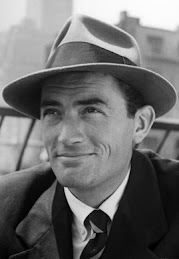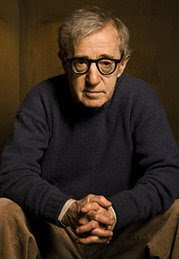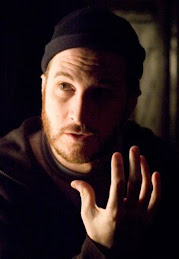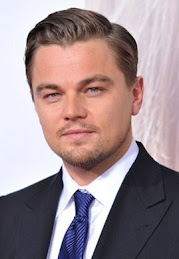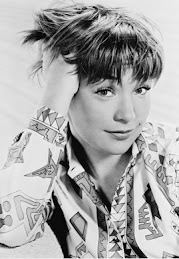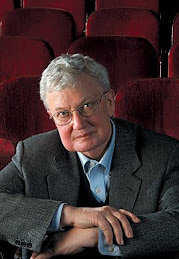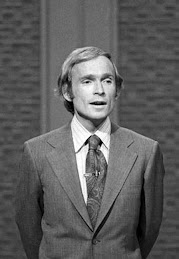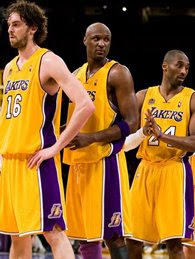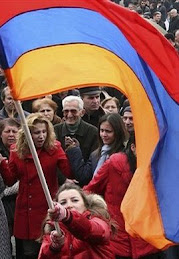It's just as I had imagined! I need to offer another course because the first course is closed! In this course, I will be teaching an introduction to cinema, in which we will be discussing the basics of cinema, as well as the foundations of the medium and the films that exemplify their respective movements. It's a closer look at the techniques, aesthetics and social implications of cinema. It's also a chance to better understand the different elements of cinema, and like all my courses, it's a chance to discover films that you have never seen!
Week One – Opening Film
Screening: Singin’ in the Rain (1952)
I believe in magic... and for the first film of this course, I would like to allow my students to experience the magic of cinema. Singin' in the Rain is one of those films that will leave an impression and become an instant favorite. It's the perfect film to lift up your lackluster life! Singin' in the Rain stars Gene Kelly, Donald O'Connor and Debbie Reynolds. It's an unforgettable film that will leave you laughing and crying and singin', and for that reason, we will screen it as the opening film for the course.
Week Two – Literary Design
Screening: The Sweet Hereafter (1997)
It's time to jump into the course, and our first order of business is studying the literary design of films. The Sweet Hereafter was adapted from Russell Banks' novel of the same title. Atom Egoyan makes a faithful adaptation here, which received a nomination for an Academy Award. It's a devastating film, which allows us to understand the way in which a novel can be transcribed onto the screen.
Week Three – Performance
Screening: On the Waterfront (1954)
Who's your favorite actor? If Marlon Brando didn't immediately come to mind, then it's probably because you have never been properly introduced to him. Marlon Brando in On the Waterfront is a role that arguably redefined acting for generations to come. The actor is often praised for his performance but audiences don't seem to understand the true commitments of actors, and that's their star persona is one of the things we will discuss.
Week Four – Visual Design
Screening: Raging Bull (1980)
I'm having some fun here because I had to write my first paper as a film scholar on this film and on this element of film production. Raging Bull is perfect in all aspects of cinema, from its performances to sound design. It's visual design, however, is so superb, I can spend hours discussing and analyzing certain scenes. Martin Scorsese creates a jungle-like atmosphere within the boxing ring and puts the audience right in the middle of it. It's exciting, devastating, and shows the deterioration of a "raging bull."
Week Five – Composition
Screening: Lawrence of Arabia (1962)
In Entourage, Billy Walsh was starting work on a film that was set to make Lawrence of Arabia look like it was shot on a sandbox. I'm not surprised that his film never came to fruition, because such a film is not possible. In terms of space and landscape, David Lean paints a sturnning portrait with this film. There are certain shots that will stay in your mind, forever.
Screening: On the Waterfront (1954)
Who's your favorite actor? If Marlon Brando didn't immediately come to mind, then it's probably because you have never been properly introduced to him. Marlon Brando in On the Waterfront is a role that arguably redefined acting for generations to come. The actor is often praised for his performance but audiences don't seem to understand the true commitments of actors, and that's their star persona is one of the things we will discuss.
Week Four – Visual Design
Screening: Raging Bull (1980)
I'm having some fun here because I had to write my first paper as a film scholar on this film and on this element of film production. Raging Bull is perfect in all aspects of cinema, from its performances to sound design. It's visual design, however, is so superb, I can spend hours discussing and analyzing certain scenes. Martin Scorsese creates a jungle-like atmosphere within the boxing ring and puts the audience right in the middle of it. It's exciting, devastating, and shows the deterioration of a "raging bull."
Week Five – Composition
Screening: Lawrence of Arabia (1962)
In Entourage, Billy Walsh was starting work on a film that was set to make Lawrence of Arabia look like it was shot on a sandbox. I'm not surprised that his film never came to fruition, because such a film is not possible. In terms of space and landscape, David Lean paints a sturnning portrait with this film. There are certain shots that will stay in your mind, forever.
Week Six – Temporal Design
Screening: Memento (2000)
Who says you have to follow the rules of filmmaking? Christopher Nolan certainly didn't when he was making Memento. In fact, he chose to tell the entire story backwards. Yes, he begins by telling us the ending and moves in reverse. It's the job of an editor to be invisible, and if their work on the film is top notch, audiences will never know about their existence. That's a problem because editors are storytellers on their own, and that's our focus of discussion.
Week Seven – Sound Design
Screening: Apocalypse Now (1979)
This is a terrific topic to discuss because most audiences often ignore sound design when it comes to films. It's often overlooked because they don't understand what it really is. Walter Murch paved the way for sound design with Apocalypse Now, considering the term was born after his contribution on this film.
Week Eight – Documentary
Screening: Waltz with Bashir (2008)
I'm sure a ton of people who don't regular watch many films have seen documentaries, but the problem is they have probably seen made-for-television documentaries. Waltz with Bashir is an amazing effort by Ari Folman because it's a foreign language animated documentary. It's terrific in terms of all three, but it's an engaging and thought provoking documentary.
Week Nine – Animation
Screening: Snow White and the Seven Dwarfs (1937)
Snow White and the Seven Dwarfs is a well-known film, but I'm certain many people didn't know it was made over seventy years ago! In fact, it was the first animated feature film - in color, in the United States - and it was produced by Walt Disney. The role of animation in films has changed over the past few decades, so we will be looking at the significance of such films.
Week Ten – Modes of Representation: Realism & Formalism
Screening: Ladri di biciclette (1948) and Sayat Nova (1968)
It's time to jump ship and look at two very different types of films. Ladri di biciclette depicts the reality of Postwar Italy. It's heartbreaking, cruel, and you could swear it's all real. In fact, it almost is, because many of the cast and crew are amateurs. In Sayat Nova, however, you will be blown away by the formalist approach. Sergei Parajanov, the filmmaker, was a poetic artist and tells a story completely through a visual approach, rather than a narrative approach. I assure you, it's nothing like you've ever seen in your life. Sofiko Chiaureli (a female!) plays an astonishing six characters in the film, including the title character of Sayat Nova.
Week Eleven – Classical Hollywood (1929-1945)
Screening: Gone with the Wind (1939)
It's time to define our times, and to be introduced to Classical Hollywood. This is the Golden Age of Hollywood, all of which seems like a dream to us now. Clark Gable, Ava Gardner, Rita Hayworth, Katherine Hepburn, Grace Kelly, Vivien Leigh... the list goes on! In our first look at a time period of filmmaking, we will discuss the history of the Classical Hollywood period.
Week Twelve – Postclassical Hollywood (1946-1962)
Screening: The Apartment (1960)
Who can resist falling in love with Shirley MacLaine, or admiring the down-and-out Jack Lemmon? This film defines this period of Hollywood because it's so rich in terms of romance, comedy, and characters. It's time to see how films began changing after the war, in terms of censorship and content.
Week Thirteen – Modern Hollywood (1963-1976)
Screening: The Graduate (1967)
The Graduate defines this period of time in Hollywood where things were changing, including the circumstances in which we made our films. This is a time in which filmmaking was changing, as the studio system began falling apart. The Graduate is one of the films in which this change is present... and making films has never been the same since, for better or for worse.
Week Fourteen – Postmodern Hollywood (1977-Present)
Screening: Who Framed Roger Rabbit (1988)
This is the time period in which we live in today, driven by franchises and technology. Who Framed Roger Rabbit is a terrific film, it's hauntingly beautiful, because of its ability to incorporate animation with live action. This is a good example of a film using technology to integrate it with its storytelling. This is the time period in which we make films in today, a time in which our fascination inspires us to work with animation, performance capture, and 3D.
Week Fifteen – Closing Film
Screening: Citizen Kane (1941)
I suppose we can save the best for last, because Citizen Kane is one of the defining films in the history of cinema. This film changed the business, not just because of it's approach in telling a story, but its performance and cinematography as well. It's time to wrap up the class, and what better way than to leave one what is arguably one of the best films of all time.
I hope you'll be back for my future courses, including an upcoming course that covers international cinema! If there are specific films that you have seen and would have something to say, please feel free to share. If there's a specific film you would just suggest as a replacement for one of the films I have chosen, I'd love to hear your thoughts.





